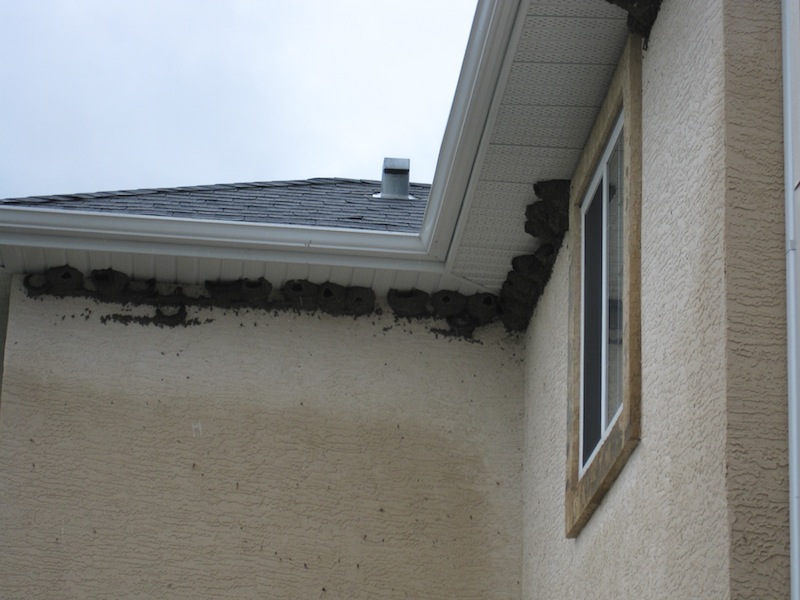
Some preventative measures offered by the CWRS that you could take before the situation gets to this point – purchase an imitation owl and perch it on your property; the owl is a predator to this and many other birds. This type of bird doesn’t like a flapping piece of foil or anything that makes noise such as a wind chime.
Below is some information from a website (http://www.ehow.com) on how to prevent birds from nesting on a house.
Monitor the nest activity daily. A nest with eggs or recently hatched birds should not be moved. Birds will not look for a nest that has been moved, and will simply abandon the nest. Moving a nest will mean certain death for the offspring and is often illegal. Birds are protected under the law.
Move the empty nest within one to two days of all the newborn birds leaving the nest. If you wait more than two days, the birds might lay more eggs. Many birds hatch two or three cycles of newborns each season. The only time it is legal to remove most bird nests is when they are no longer in active use
Block the opening or access point to the nesting area. Eaves and other areas around a roof are commonly used areas. Use wood, canvas or other materials that will prevent the birds from nesting. Obstructing the space must be done immediately once there is no activity near the nest.
Purchase bird netting from home and garden suppliers. The netting will not allow birds to pass through, and it can be used in eaves that are too large to block off with wood or metal. Birds will not get caught in the netting; it is produced specifically to stop birds from nesting in specific areas. Only use approved bird netting—other types can entangle the birds and be hazardous to their safety.
Capping chimneys will deter birds from nesting there. Chimneys are common places for nesting to occur. Once the birds can be heard, the nest has been built and the eggs will soon be hatching—at that point it is illegal to remove the nest. Cap a chimney in the late fall or winter months to prevent early spring nests being built on the opening. Call a professional chimney sweep to clean the chimney of debris and place a stainless steel cap on the chimney. Chimney Swifts, a common bird from South America, return to the same chimney to nest each season. Make sure to tell neighbors the chimney is being capped—the Swifts may choose to nest at a nearby location once they discover there are no feasible nesting sites at the former location.
Make loud noises to startle the birds and encourage movement outdoors. Several companies manufacture bird alarms and visual simulators that show flashing lights. Tactics involving lights and sounds will only work for a limited time, until the birds acclimate to the adjusted surroundings. The scare tactics must be used for three to four days.
Spraying chemical repellents and other materials against birds is often illegal. A gel-like repellent can be placed on the landing area. Most birds will find the area too sticky to perch on and will look for another nesting area. However, with a heavy population of birds, the gel will not remain sticky for a lengthy time. Grape flavoring, or methyl anthranilate, can be sprayed onto trees, shrubs and other nesting areas. Again, each method may be legal for only certain species of bird. Check with your local wildlife authorities for specific laws and regulations.
Read more: How to Prevent Birds From Nesting on a House | eHow.com http://www.ehow.com/how_5091161_prevent-birds-nesting-house.html#ixzz1yMfKDAix
In response to Canada's Online News Act and Meta (Facebook and Instagram) removing access to Canada's local news from their platforms, Anchor Media Inc encourages you to get your news directly from your trusted source by bookmarking this site and downloading the Rogue Radio App. Send your news tips, story ideas, pictures, and videos to info@anchormedia.ca.








